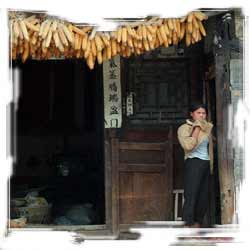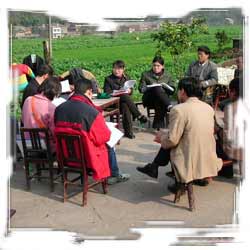February, 2005
 The demand for maize in Asia is expected to skyrocket in the next two decades, driven primarily by its use for animal feed. In the uplands of seven Asian countries, however, demand is also increasing in the farming households who eat the maize crops they grow. CIMMYT and the International Fund for Agricultural Development (IFAD) have recently completed a project promoting food and livelihood security for upland farmers in Asia who depend on maize for food and feed.
The demand for maize in Asia is expected to skyrocket in the next two decades, driven primarily by its use for animal feed. In the uplands of seven Asian countries, however, demand is also increasing in the farming households who eat the maize crops they grow. CIMMYT and the International Fund for Agricultural Development (IFAD) have recently completed a project promoting food and livelihood security for upland farmers in Asia who depend on maize for food and feed.
By 2020, the International Food Policy Research Institute (IFPRI) estimates that demand for maize in all developing countries will surpass the demand for wheat and rice, with Asia accounting for over half of this growth. Responding to these predictions, teams of researchers visited farmers in the uplands of China, India, Indonesia, Nepal, the Philippines, Thailand, and Vietnam to discover ways in which maize technologies could improve livelihoods.

To further develop maize improvement recommendations, national workshops and seven publications built upon the farmer surveys. Careful planning and appropriate procedures on the part of scientists and policy makers will ensure an easier transition as farmers face the oncoming demand. A clear message that emerged from the study in Vietnam, for example, was the need to help farmers apply sustainable practices to avoid degrading natural resources—particularly in fragile, marginal settings—as the demand intensifies.
These conclusions were drawn by researchers conducting rapid rural appraisals with farmers in commercial and semi commercial systems in the up- and lowlands of these seven countries. The second stage of fieldwork entailed more in-depth participatory rural appraisals in marginal, isolated areas and involved village leaders and groups of farmers. Details on the sociological, agro-economical, environmental, and technological aspects of maize production were assembled, and the resulting publications can be viewed, downloaded, or ordered here.
In addition to CIMMYT and IFAD, the project involved collaboration with IFPRI, Stanford University, senior officials of national research programs, and ministries of agriculture.
 Nutrition, health and food security
Nutrition, health and food security